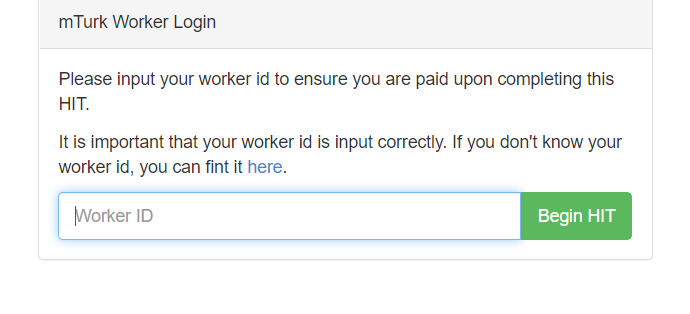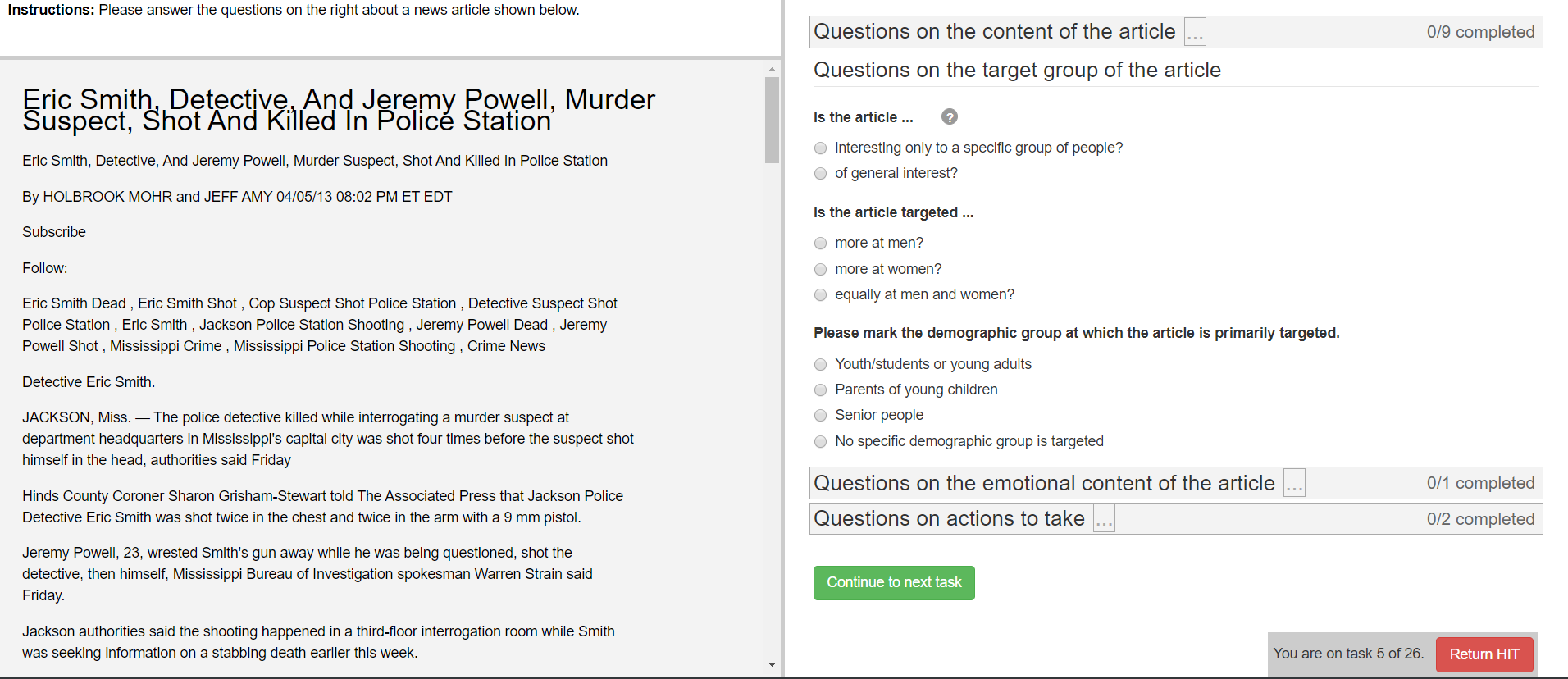Concepts¶
Confusingly, Crowdsourcr overloads the word HIT (“human intelligence task”). There is the HIT in Amazon Mechanical Turk, which is a single entry that is published for workers to see. This appears as something like the following, at least in the Amazon Mechanical Turk Requester interface:

For each assignment in the MTurk HIT, there is a corresponding HIT in Crowdsourcr, also known as a cHIT (for “Crowdsourcr HIT”). As workers follow the link in the HIT, they are assigned one of the cHITs that has been assigned to no one else yet. The Admin interface tends to call cHITs a “HIT,” but hopefully there won’t be too much confusion.
After accepting your HIT on Amazon and clicking on the associated crowdsourcr link a worker is directed to a login where she has to enter her worker id:

This ID is used to later pay the worker’s reward as well a bonus (if applicable).
Each cHIT has a number of tasks. Tasks happen in sequence, and a task is shown to the worker as a single screen. The screen is divided into two parts. The left division is an iframe that can hold HTML configured by the task. The right division is a number of modules.

Each section in the right division is a module. Modules are a labeled collection of questions of various types. A worker is forced to complete each module before going onto the next task for the cHIT.
Multiple cHITs can refer to the same tasks. There is a mechanism for preventing a worker from being assigned a cHIT if that cHIT has a task which is contained in exclusion lists of tasks they have already completed.
Multiple tasks can refer to the same modules. Task/module pairs are used for defining the group of users who have done the “same” question for purposes of assigning bonuses.
Just to emphasize the structure of the model once more: there is a many-to-many relation between cHITs and tasks, and a many-to-many relation between tasks and modules. The task/module pair defines the context for the questions in the module.